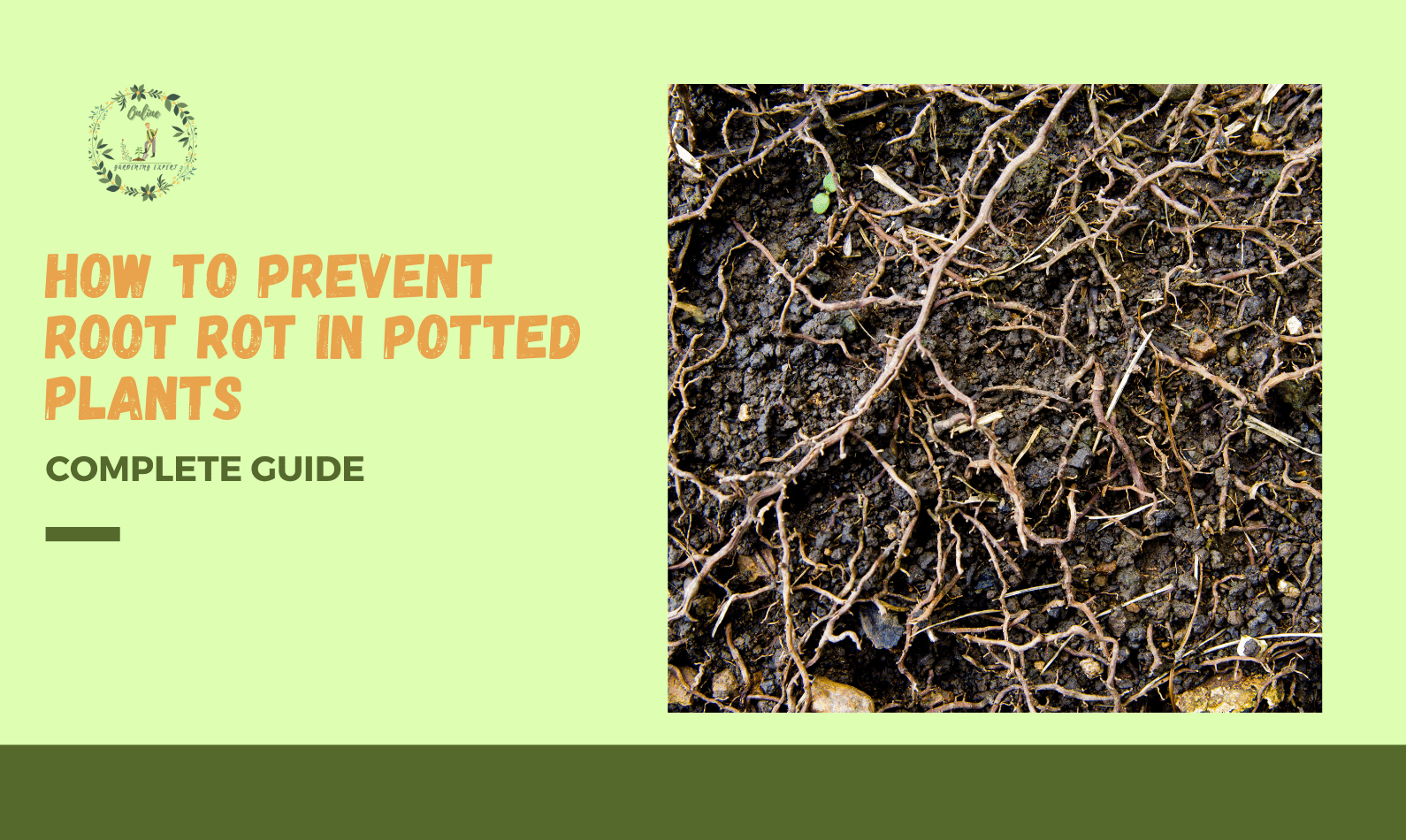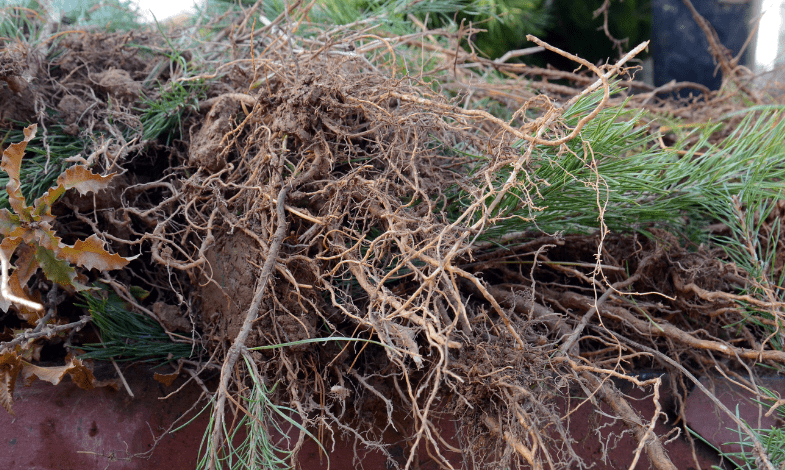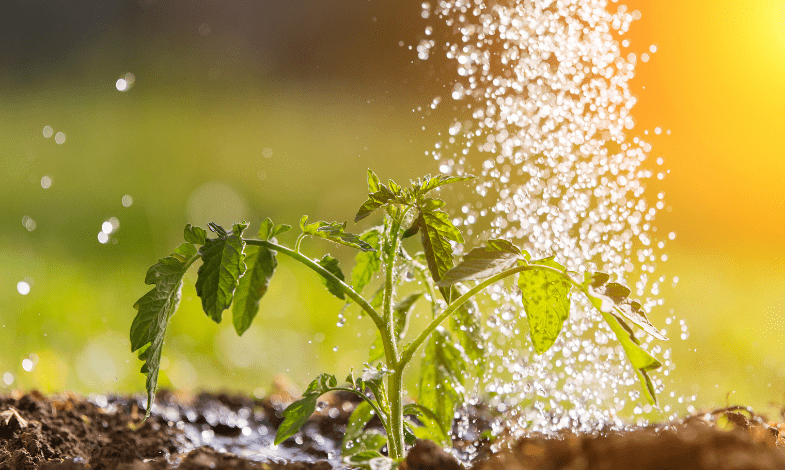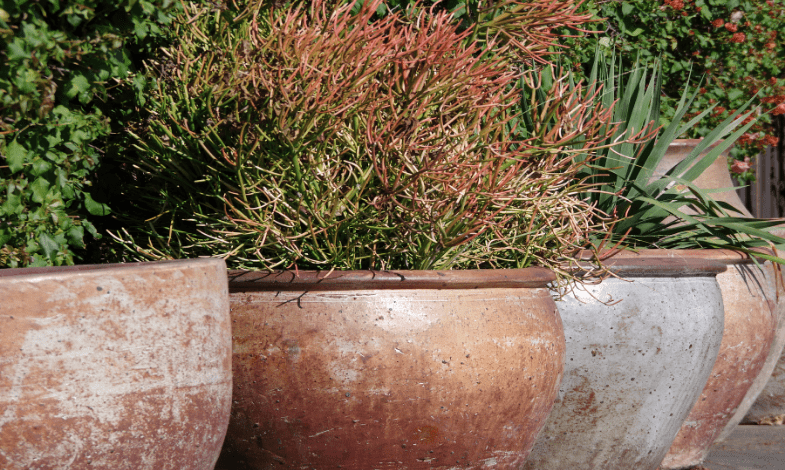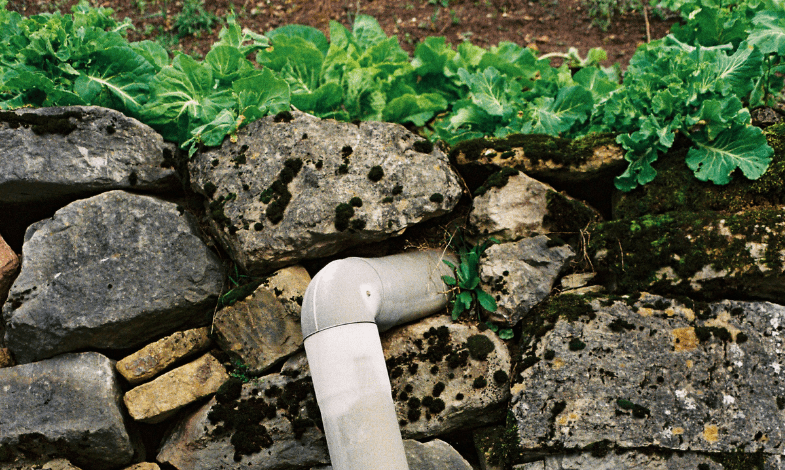How To Identify, Fix and Prevent Root Rot: Root rot is one of the most dangerous and prevalent illnesses that our houseplants may suffer from. An infection may kill a plant from the ground up. It spreads fast, and it will be too late if action is not taken promptly. Although prevention is the best policy, the disease can be prevented if detected early. This article will explain what root rot is and how it occurs and how to detect and cure it. And, maybe most significantly, how to avoid it.
What Is Root Rot?
Root rot occurs when the roots of your plant succumb to decay pathogens. The illness causes afflicted roots to deteriorate into a brown or black mush incapable of transporting nutrients to the rest of the plant. It is deadly in its development.
Root rot may swiftly spread throughout the plant. Many different viruses, bacteria, fungus, and oomycetes can cause the illness (water molds). Fusarium, Pythium, Phytophthora, and Rhizoctonia are common pathogens, but they aren’t important for essential treatment.
Container life makes a plant more vulnerable, but these viruses aren’t only after houseplants: they inflict massive economic harm to crops all around the world. Because the artificial environment might promote illness, you must exercise caution to ensure that your green babies are not sitting ducks.
Read more about What to do with old potting Soil?
What Causes Root Rot?
Because root-rotting bacteria thrive in dampness, wet conditions are usually the starting point. Here are some of the major causes of infection:
-
Overwatering
It is the major one: providing a plant with more water than it can manage is a typical breeding ground for rot. Overwatering suffocates the roots and reduces the oxygen level in the soil, thereby laying the groundwork for opportunistic diseases.
-
Soil with Poor Drainage
Heavy soils store a lot of water. Because of this propensity to remain saturated (and dry to a cement-like hardness), well-draining soil is especially advised for most plants: persistently moist roots are poised for root rot.
-
Insufficient Drainage
Containers for houseplants should include drainage holes to let the excess water drain. Placing stones at the bottom does not work since it keeps a layer of stagnant water beneath the roots.
-
Pots That Are Too Big
You may be tempted to offer your plant more growth space (and so spare yourself some future repotting labor), but this is rarely a smart idea. Excess soil might cause issues since the vacant areas can create a soggy dead zone.
-
Containers That Are Not Permeable
Clay pots are heavy, but they have one major advantage: they are permeable. To let the earth breathe, water can evaporate through its walls. Non-porous containers retain moisture and encourage soggy conditions, such as plastic or glazed containers.
-
Inability To Empty Caches
A saucer or cache pot put beneath a houseplant’s container can shield the surrounding surface from water drainage, but if it continues in touch with the runoff, it may cause the soil to become sodden. One helpful safety tip is to set the pot on pebbles that raise it above the waterline. It also contributes to an increase in local humidity.
-
Cool temperatures
If the temperature drops, regular watering may be excessive. It may not be an issue in your home’s regulated environment, but keep in mind that water usage and evaporation are both higher in warmer weather.
-
A Lack Of Air Flow
Evaporation rates are also increased by air circulation: stagnant air can result in wet soil. This problem can be produced by crowding plants to increase local humidity. Still, crowding can also result in poor ventilation and soil that remains moist for an extended period.
-
Too Deep Planting
Burying the stem invites deterioration in many plants. It isn’t true for every plant—some may root along a buried stem—but you should check the specs of your houseplant before decreasing its planting depth.
-
Out of Season Watering
Many plants have seasons in which their development slows, or they become dormant. They need less water at specific periods, therefore sticking to the same watering plan may result in inadvertent overwatering.
-
Other Contributors To Root Rot
Moisture promotes the growth of root rot, but there are other ways for your plants to become infected:
-
Contaminated Tools
It is critical to clean your tools before reusing them with other plants. Pathogens stick to pots, shears, trowels, and other gardening equipment and can readily spread to other plants if not sanitized.
-
Purchasing Sick Plants
Bringing home a simple store item has started more than one horticultural disaster. Although the early stages of root rot might be challenging to identify, avoid plants with wilted leaves or puffy patches on the stems. Only buy from trustworthy sellers, and quarantine new purchases away from other plants until you’re confident they’re healthy.
-
Compromised Soil
Pathogens in Compromised Soil dwell in the soil, waiting for spring. Commercial mixtures are typically sterile, but avoid using garden soil or reusing the medium without sterilizing it. To prevent infection, keep potting soil in an airtight container.
-
Weaknesses and Stress
An opportunistic infection mainly causes root rot. Pathogens can take advantage of over-or under-fertilization, droughts, physical injury, or even a shift in light or other environmental variables, in addition to infecting a stressed plant caused by overwatering. The greatest approach to avoid problems is to keep a plant healthy.
-
Symptoms Of Root Rot
Early diagnosis of root rot is crucial for healing; however, the disease’s early stages occur out of sight.
-
Early Warning Signs Of Root Rot
Slow growth is one common sign that the roots are suffering. Yellowing leaves are another sign of impending doom. If you see leaf discoloration, inspect the soil. Soil that stays wet could also indicate a problem down below. Another red flag is when leaves curl throughout the day but seem to heal overnight.
Learn more about How to Get Rid of Fungus Gnats
-
Root Rot Red Alert
Swollen, squishy stems, and withering leaves are characteristic symptoms of the illness. Because the plant rots from the bottom up, the lowest sections of the plant display signs first, the entire root system may not yet be affected, but it will be shortly if nothing is done.
If you suspect root rot, gently remove the dirt and inspect the roots. The typically robust white roots begin to get limp instead of crisp, which is the expected process. They often become yellow before becoming brown or black. The dark coating of the root may frequently be readily peeled away to reveal the inner tissue.
Another symptom of root rot is the stench of rotting. It gets more noticeable as the condition progresses—once you recognize the scent, you may identify the problem sooner. Healthy roots are either odorless or have an earthy odor.
-
The Last Stage
The roots become mushy as the illness progresses. If not halted, the entire facility will finally collapse. When you inspect the stem in advanced instances, it may just fall off in your palm.
How to Fix Root Rot?
Remove your plant from its pot and wash the old dirt away from the roots to treat root rot. Using sterile pruners, remove any sick roots from the plant, leaving only healthy roots. Then, repot the plant in a sterile container with new, well-draining soil, taking care not to overwater it. The severity of the disease determines the details of treatment. Early detection allows for less intrusive treatments.
The primary guideline of root rot treatment is to cure it as soon as possible. Rapid intervention allows you to salvage as much of the plant as possible. A single day may make a significant impact. During treatment, keep the plant out of direct sunlight. Withhold fertilizers until the plant is healthy again: the roots are affected and will not distribute nutrients adequately.
Treating Mild Root Rot
Perhaps your plant is withering, and you’ve noticed that the soil remains damp. However, there is no distinct odor, inflated stems, or other telltale symptoms of decay. In that scenario, reduce watering and keep a careful eye on the plant. Mild infections can occasionally be treated by allowing the soil to dry up and altering your watering habits. It eliminates the disturbance of repotting, which might impede the recovery of a weaker plant.
Remove any mulch or fallen stuff from the topsoil to enable better evaporation. The goal is to deprive any growing infections of extra moisture, allowing your plant’s natural defenses to finish them out. Ascertain that there is adequate airflow over the pot. If the medium is too moist, consider carefully removing the plant’s soil from the container. Set it on a newspaper and leave it together in a block. It allows the soil to dry faster and provides additional oxygen to the roots. A fan will help to speed up the process.
Treatment Of Severe Root Rot
If the rot is widespread but there are still surviving roots, urgent measures must be taken: you must repot the plant while removing all damaged roots and leaves. Remember that repotting causes additional plant stress, so continue with caution.
The Steps are as follows:
- Remove the plant from its container and examine the roots.
- To remove the contaminated dirt, wash the root ball.
- Using sterilized shears, cut away mushy or brown roots. (After usage, re-sterilize!)
- Remove any wilted or discolored leaves.
- Trim off the buds and blooms, as well as roughly half of the leaves, so that the remaining roots can effectively serve the plant.
- Repot in clean, dry soil that drains well. Give it a mild light and slowly resume your watering routine.
- Return to a mild watering regimen with caution.
- Isolate the plant and keep an eye on it. If the rot reappears, say good-by and securely dispose of the plant.
- Remember that because the plant now has fewer roots, it will require less water.
Very Severe Root Rot
Because it requires putting away the plant, the most severe instances are the simplest to treat. Make sure it doesn’t come into contact with any of your other plants. Discard any pots or other equipment that came into contact with it, as well as the soil it was growing in. Short and depressing.
Advanced Root Rot Treatments
Commercial Fungicides To Treat Root Rot
- Commercial fungicides can be helpful, but there are certain limitations.
- To begin with, no single chemical can cure every type of fungus. A germ or virus might be to blame for the illness.
- If you are willing to pay the time and money – and have the time – a specialist can detect the disease infecting your plant. Some nurseries provide this service. On the other hand, anti-fungal treatments are a shot in the dark without this diagnosis.
- The chemicals are also not cheap.
- Finally, fungicides have the potential to harm beneficial soil organisms. It, unfortunately, might make your plants more prone to decay.
Natural Root Rot Remedies
There are several things to explore if you wish to handle the problem naturally. Many gardeners report excellent success with natural remedies, while others claim ineffective.
Cinnamon
Consider adding some chamomile tea as you begin to water your healing plant. Some growers report success using the solution as a natural microbial and light fungicide. Chamomile is said to work similarly to cinnamon but in liquid form.
Chamomile
Consider adding some chamomile tea as you begin to water your healing plant. Some growers report success using the solution as a natural microbial and light fungicide. Chamomile is said to work similarly to cinnamon but in liquid form.
Hydrogen Peroxide
Another potential root rot therapy that adds oxygen and aids in the battle against the infection is a 3 percent solution of Hydrogen Peroxide, which is widely accessible. Hydrogen Peroxide is often used in hydroponic systems to fight root rot and may be beneficial for normal houseplants.
Spritz the damaged leaves and stems with roughly 1-1/2 teaspoons of 3 percent solution diluted in a cup of water. This solution can also be dripped into the soil. Be careful that this treatment may potentially harm beneficial species, and its efficacy in the soil varies. As a last resort, some gardeners immerse the roots of a badly diseased plant in a diluted solution before repotting.
How to Prevent Root Rot in Potted Plants?
The greatest way to combat root rot is prevention, which entails avoiding errors. Here are the prerequisites for not requiring this post again:
Sterilized well-draining Soil
- Few plants enjoy having a lot of muck in their containers. Fortunately, thick dirt is easily remedied.
- Potting media may be thought of as a spectrum ranging from impermeable, water-holding clay to totally porous sand—most plants prefer a combination that lies somewhere in the middle. To open up thick clay soil, add sand, perlite, bark, or other coarse amendments to improve drainage, and vice versa.
- Organic additions such as worm compost and leaf mold help to “correct” any kind of soil so that it drains properly. Organic material also has the added benefit of being naturally fertile.
Correct Watering
- Don’t water your houseplants all at once. Succulents require less water than many tropical plants, and even potted water hogs dislike being continually wet.
- It is preferable to soak the pot and then completely drain it. Allow the topsoil to dry completely between waterings. Remember to water less in cooler weather or when the plants are dormant.
Proper Potting
- The size of its root system dictates the size of a plant’s container. Tubers, epiphytes, and many succulents have shallow roots, yet others are deep.
- Too much “empty” soil is troublesome because, in the absence of roots to take up water and aerate the soil, dead zones can form, allowing root rot to take hold. Because one size does not fit all, get to know your plant.
- Furthermore, as previously said, clay pots are ideal because they enable water to evaporate through the side and allow the soil to breathe.
Give Them Room
Ensure adequate airflow around your plants to prevent them from growing in stagnant circumstances (or from contaminating one another).
Plant Choice
- Choosing the right plants is also essential: some are more prone to root rot than others.
- Cactus and other succulents, for example, require less irrigation than other plants, which renders their roots susceptible to disease under wet situations. Because the thin roots of an epiphyte are primarily used for anchoring rather than collecting water and nutrients, they are prone to root rot.
- If you don’t have complete control over your watering can stick to moisture-loving plants. Peace Lilies, for example, are challenging to overwater, while many ferns thrive in consistently wet circumstances. Remember that even plants that prefer frequent irrigation do not enjoy damp soil.
Observation
- Consistent monitoring is the most effective defense against root rot. Even specialists agree that their failures were primarily due to inattention.
- Make it a habit to keep an eye on your plants and take necessary action. Examine any differences in their development of color. Please keep track of how soon the topsoil dries out and become acclimated to their watering schedule. Keep an eye out for indications of dormancy.
- Plants do not communicate verbally, but they do communicate nonverbally. To become a green thumb, you must first understand their language. By paying attention, you can generally prevent the agony, guilt, and stinky mess of root rot.
Conclusion: How to Prevent Root Rot in Potted Plants?
Root rot is most common in soils that are too dense for water to flow properly, or in containers with insufficient drainage holes. While container plants are particularly vulnerable to root rot, garden plants are not immune. Most garden root rot problems may be avoided by improving soil drainage before planting. 2 While too much water may be the cause of root rot, the problem begins because too much water creates an ideal habitat for the true culprit: fungus.
Learn more about How to store potting soil?
Frequently Asked Questions
What is Root Rot?
Root rot is a disease that will destroy plants if left untreated. Because the earliest signs of root rot appear beneath the earth, gardeners are sometimes unaware of the problem until it has progressed. When plants begin to display signs of root rot, such as yellow leaves or slowed growth, take quick action to cure the problem.
Is There Any Natural Root Rot Remedy?
Yes, Cinnamon, chamomile, and hydrogen peroxide can be used to prevent root rot.
When the Temperature is Cool, What to Do to Prevent Root Rot?
If the temperature drops, regular watering may be excessive. It may not be an issue in your home’s regulated environment, but keep in mind that water usage and evaporation are both higher in warmer weather.

